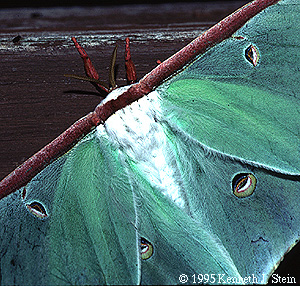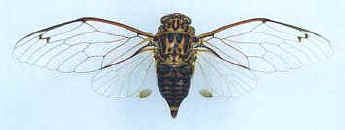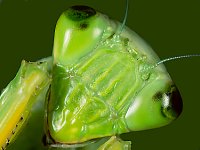|
|
|
|
|
|
This page explains insect family names, and what they mean.
Hymenoptera mating on the wing; Hymen = god of marriage, ptera = wings. The Queen bee mates with a drone male in midair duing their mating flight.
Lepidoptera means scale wings; lepido = scale, ptera = wings. Wings of butterflies and moths are often covered with a colourful mosaic of tiny scales.

Flies
Diptera means two wings; di = two, ptera = wings. Flies do very well with their single pair of fore wings. The back pair are often reduced to a couple of knob-like balance organs.


Beetles
Coleoptera means sheath wings; coleo - sheath, ptera = wings. Beetles' front pair of wings are hard cases, known as elytra, and they protect the hind wings and body below.
Neuroptera means nerve wings; neuro = nerve, ptera = wings. Wings of these insects are made with an elaborate network of supporting veins.
Homoptera means uniform wings; homo = alike, ptera = wings. The front wings of these insects have a uniform textured appearance.

True Bugs
Hemiptera means half wings; hemi = half, ptera = wings. The front wings of these insects are divided between a thick bottom part and a thin tip.
Cockroaches are fast-running insects often with wings. A few well known species have successfully evolved to live in human houses and use their food supplies.
Mantodea means soothsayer; a person claiming to be able to predict the future. These insects have highly modified front legs often held in a position like someone praying.

Grasshoppers & Crickets
Orthoptera means straight wings; ortho = straight, ptera = wings. These insects often have a pair of long and thickened forewings and a thin membranous hind pair.

Walking Sticks
Stick insects are usually extremely elongated and twig-like in appearance. Sometimes this camouflage is taken a step further with the addition of leaf-like structures.
Odonata means tooth. Apart from jet propulsion, the aquatic nymph often have an extendable jaw which can catch prey some distance away from the rest of the head.
Ephemeroptera means short-lived wings; emphemera = one day, ptera = wings. After a year or more as an aquatic nymph, adults emerge in swarming nuptial flights and live for only a day or so.
Arthropod means segmented feet; arthro = joint, poda = foot. Including insects, this huge group contain animals often mistaken for insects, such as spiders and centipedes. Spiders and centipedes are actually not insects at all!